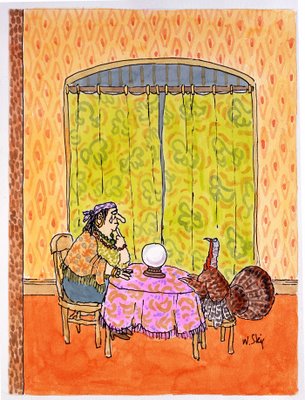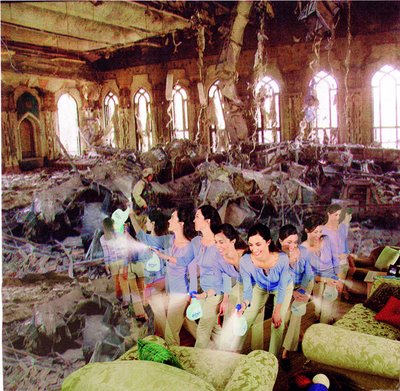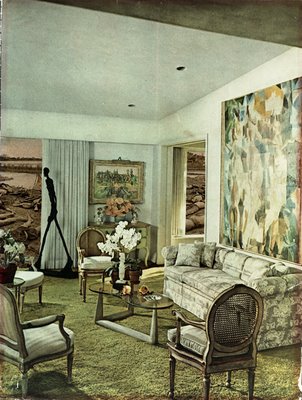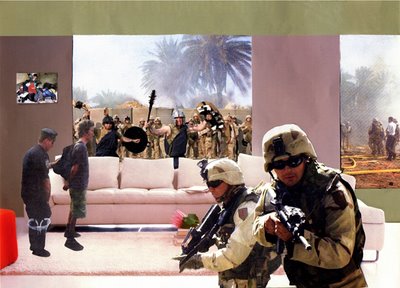William Steig on Thanksgiving

William Steig, the great New Yorker cartoonist, spent the last decade of his life living in an apartment in Boston’s Back Bay before his death in 2003. There’s a new exhibition of his work at New York’s Jewish Museum and an accompanying catalogue that I’m going to be writing about here soon. But in the meantime, as a timely preview, above is a Steig cartoon that was published in The New Yorker in 1992.
“From the New Yorker to Shrek The Art of William Steig,” The Jewish Museum, 1109 Fifth Ave., New York, Nov. 4, 2007, to March 16, 2008.
Pictured: William Steig, “Untitled [turkey with fortune teller],” published in The New Yorker, Nov. 30, 1992, originally conceived as a New Yorker cover, pen and ink and watercolor on paper. Collection of the William Steig Estate. © 1992 William Steig. Photograph by Richard Goodbody.










